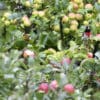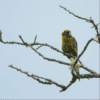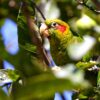Sulphur-winged Conure
Also known as:
Sulphur-winged Parakeet, Hoffmann's Conure or Parakeet
Also known as:
Sulphur-winged Parakeet, Hoffmann's Conure or Parakeet
DID YOU KNOW?
The Sulphur-winged Conure is the only Pyrrhura conure with yellow on its primary feathers. It is also the only member of its genus in its range.

Pyrrhura

hoffmanni
Size:
24 cm (9.3 in)
Weight:
84 g (3 oz)
Subspecies including nominate:
two: P.h. hoffmanni, P.h. gaudens
Colour Adult:
P.h. hoffmanni: Both adults have variable plumage; shafts of feathers of head and throat streaked and tipped with yellow; dark red ear coverts; yellow inner primary feathers and outer secondary feathers, becoming green at tips; red/olive uppertail margined with green. Beak horn in colour. Eye ring bare and white. Eye brown.
P.h. gaudens: Both adults shafts of crown feathers and occiput streaked green/yellow to orange/red and lightly tipped with dull red.
Colour Juvenile:
P.h. hoffmanni: In general duller than adults; minimal yellow streaking to shafts of feathers on head and throat; minimal yellow on primary and secondary feathers.
P.h. gaudens: As in hoffmanni; streaking of shafts of head and throat absent.
Call:
Calls made in flight are high-pitched and piping; while perched are penetrating and somewhat harsh.
More Information:
Content Sources:
CITES
BirdLife International
Cornell Lab of Ornithology/Birds of the World
Parrots: A Guide to Parrots of the World, Juniper and Parr, 1998
Parrots of the World, Forshaw, 2006. 2010 edition
Parrots in Aviculture, Low, 1992.
Parrots: Their Care and Breeding, Low, 1986.
Captive Status:
Rare
Longevity:
—
Housing:
Enclosure 3 x 1 x 2 m (9.8 x 3.3 x 6.5 ft); minimum temperature 10 C (50 F).
Diet:
Fruits such as: apple, pear, banana, cactus fruits, orange, pomegranate, papaya, mango; vegetables such as: carrot, celery, green beans and peas in the pod; green leaves such as: Swiss chard, kale, dandelion, lettuce, chickweed; berries such as: mountain ash, pyracantha, elder; seed mix such as: canary, millet, safflower, oats, buckwheat and a little hemp; some sunflower sprouted or dry; complete kibble.
Enrichment:
Vigorous chewer so provide fresh, unsprayed branches of fir, pine, elder or willow regularly; wooden block and vegetable tanned leather toys, heat sterilized pine cones. Enjoys bathing so provide overhead misters or shallow water bowls.
Nest Box Size:
Vertical box 20 cm x 20 cm x 80 cm (8 x 8 x 32 in).
Clutch Size:
6
Fledging Age:
7-8 weeks
Hatch Weight:
—
Peak Weight:
—
Weaning Weight:
—
World Population:
Estimated at fewer than 50,000 mature individuals. Tentatively assessed as stable.
IUCN Red List Status:
Least Concern
CITES Listing:
Appendix II
Threat Summary:
Not globally threatened. A BirdLife “restricted-range” species. Fairly common to common within its small range. Apparently tolerant of substantial habitat changes. Very little trapping occurs.
Range:
P.h. hoffmanni: S Costa Rica, mainly in Cordillera de Talamanca and nearby ranges, and reaching Caribbean approaches to Cordillera Central.
P.h. gaudens: W Panama, in W Chiriqui and nearby Bocas del Toro to Santa Fe region, NW Veraguas.
Habitat:
Found from 1300-3000 m (4264-9840 ft) in mountainous areas, preferring montane forests in subtropical zone. Also seen in logged forest, second growth and partly cleared areas, shrubbery and treed pastures.
Wild Diet:
Feeds on fruits of Ficus, Croton, Leandra subseriata, Myrtis and Miconia plants.
Ecology and Behaviour:
The only member of its genus found in Central America. Seen in pairs or more often groups of 5-15 birds. May make daily movements down the mountains in response to food availability, returning to higher ground to roost. Feeds in the canopy or in smaller trees and shrubs near the forest edge.
Clutch and Egg Size:
6 eggs
Breeding Season:
January-June. Nest is in tree cavity or broken hollowed stump.
Related Links:
—
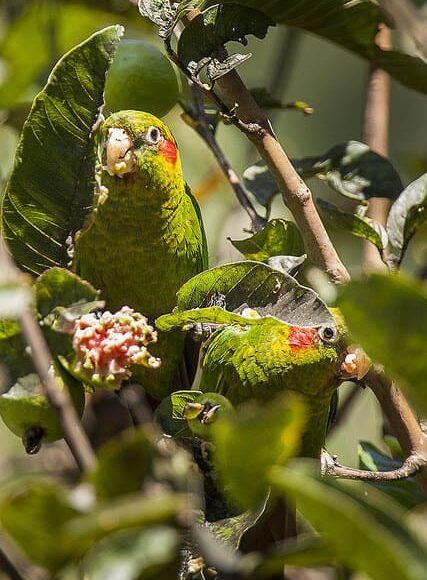
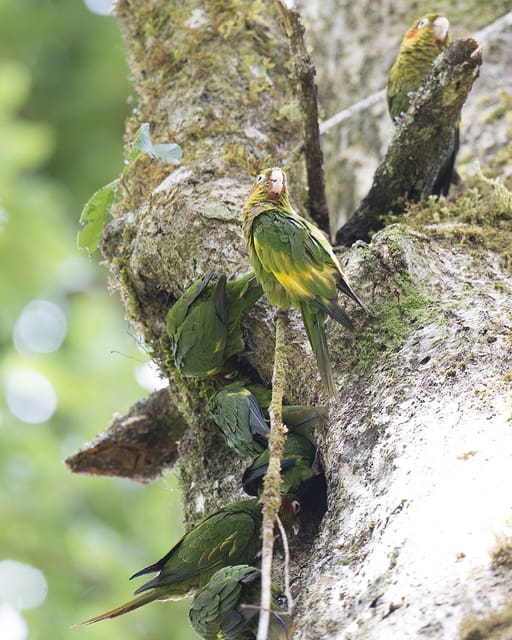
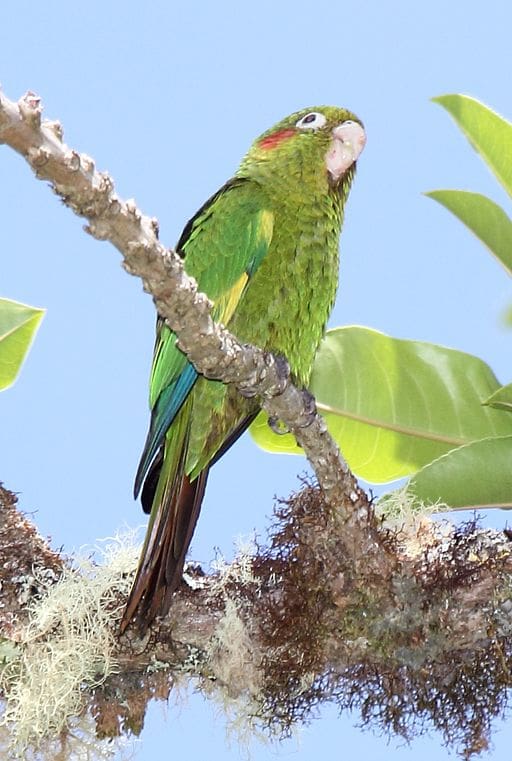
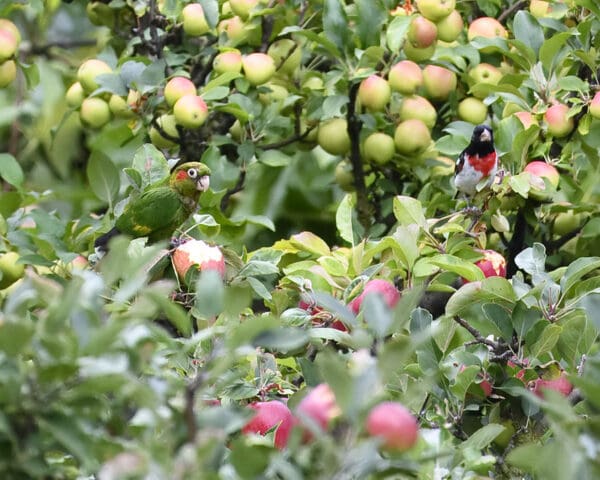
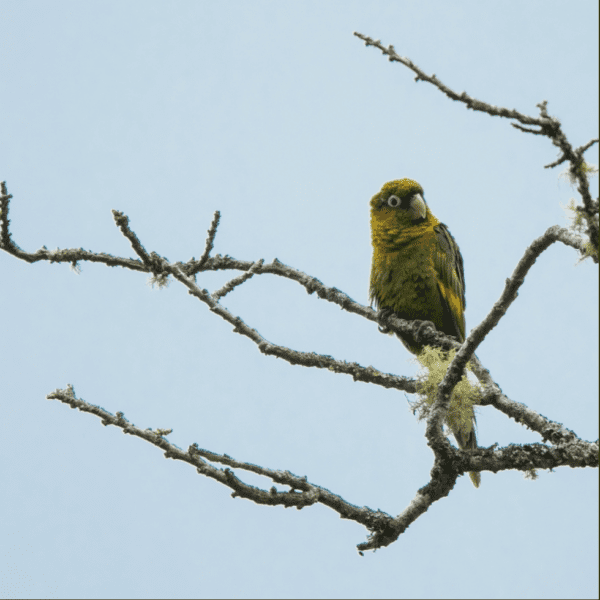
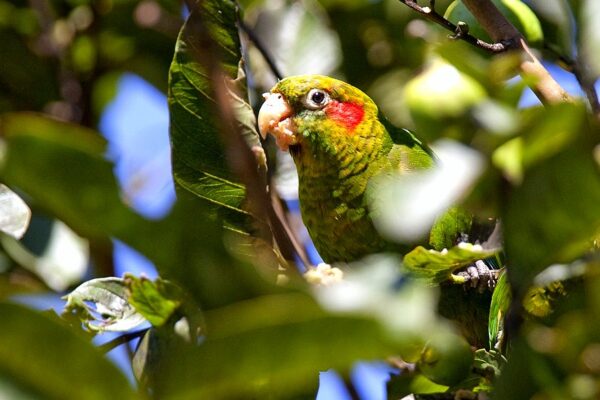
![© Francesco Veronesi [CC BY-NC-SA 2.0] via Flickr Wild Sulphur-winged Conures feed on fruit](https://gt2024.parrots.org/wp-content/uploads/2023/01/wpt_Sulphur-winged-Conure_1358-4-e1732821525116-100x100.jpg)
![© Ben Johnson [CC BY-ND 2.0] via Flickr Wild Sulphur-winged Conures gather around a tree cavity](https://gt2024.parrots.org/wp-content/uploads/2023/01/wpt_Sulphur-winged-Conure_1358-3-100x100.jpg)
![© Dominic Sherony [CC BY-SA 2.0] via Wikimedia Commons A wild Sulphur-winged Conure perches on a mossy branch](https://gt2024.parrots.org/wp-content/uploads/2023/01/wpt_Sulphur-winged-Conure_1358-1-100x100.jpg)
